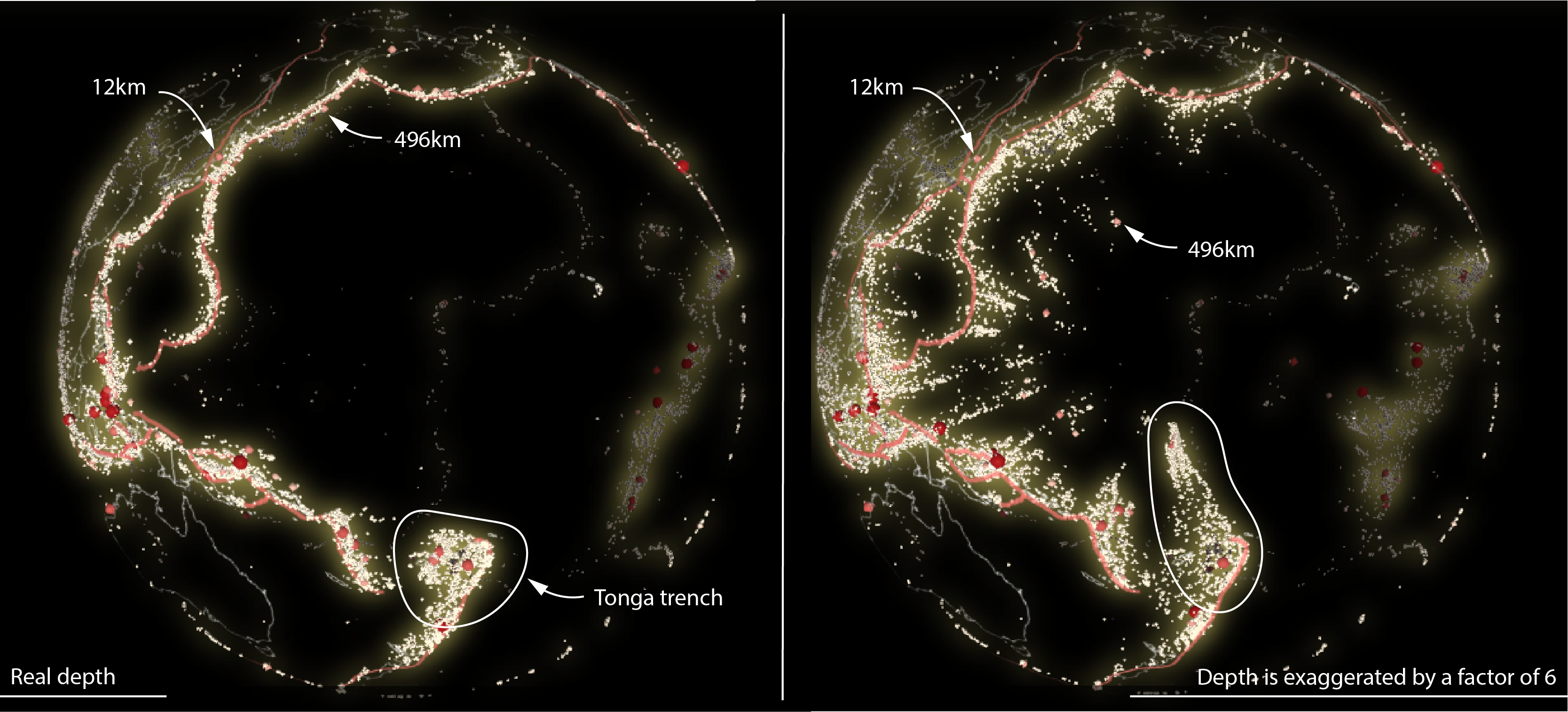

Multiple graphics layers can be created and saved to preserve the output from different symbol options.
#Usgs 3d earthquake software#
Using a newly-developed software package, SPECFEM-X, we show that the presence of topography alters the shape of predicted surface deformation patterns for the 2010 Maule and 2015 Gorkha earthquakes. Symbols created by 3DFM are stored in graphics layers that appear in the ArcScene® table of contents. Here, we investigate the effects of 3D structure on forward models of coseismic deformation and on earthquake static slip inversions. For a large dataset, these filters can be used to create different subsets of symbols. It is also possible to filter the data using any combination of the strike, dip, rake, magnitude, depth, null axis plunge, pressure axis plunge, tension axis plunge, or fault type values of the points.
#Usgs 3d earthquake Patch#
The size of the symbols can be changed by adjusting their diameter, scaling them based on the magnitude of the earthquake, or scaling them by the estimated size of the rupture patch based on earthquake magnitude. The appearance of the symbols can be changed by (1) creating rings around the fault planes that are colored based on magnitude, (2) showing only the fault planes instead of a sphere, (3) drawing a flat disc that identifies the primary nodal plane, (4) or by displaying the null, pressure, and tension axes. In addition to the default settings, there are several other options in 3DFM that can be adjusted. If depth values for each earthquake are included, the focal symbol will also be placed at its appropriate location beneath the Earth's surface. By default for each focal point, 3DFM will create a black and white sphere or “beach ball” that is oriented based on the strike, dip, and rake values. Other information, such as depth and magnitude of the earthquake, may also be included in the dataset.

The program requires as input a GIS point dataset of earthquake locations containing strike, dip, and rake values for a nodal plane of each earthquake. This tool operates within the Environmental Systems Research Institute (ESRI®) GIS software ArcScene® 9.x. Statewide for Alaska, quality level 5 IfSAR data are acquired that have a vertical error of 185 centimeters RMSEz. The data must have been acquired during the previous eight years.We created a new tool, 3D Focal Mechanisms (3DFM), for viewing earthquake focal mechanism symbols three dimensionally. Different colors represent different layers. Quality level 2 data have a minimum nominal pulse spacing of 0.7 meters and a vertical error of 10 centimeters, measured as root mean square error in the elevation (z) dimension (RMSEz). A 3D animation of seismic reflection data takes viewers through the layers of a chunk of Earth below the seafloor. territories, the USGS and its partners acquire quality level 2 or better aerial lidar data. Partners reduce their risks and can concentrate on their business activities.įor the conterminous United States, Hawaii, and the U.S. Simpler data acquisition that provides contracts, published data-acquisition specifications, and specialized quality assurance and information technology expertise. USGS and non-USGS collections of earthquake-related features and effects and shaking damage. Compilations of information about significant earthquakes, swarms or sequences, and fault zones of interest. Provides data ready for applications that span project, jurisdictional, and watershed boundaries, Largest earthquakes, significant events, lists and maps by magnitude, by year, or by location. territorial, and local government partners, including the option of “buying up” to acquire higher quality data.Ĭonsistent, high-quality national coverage that Predictable, efficient, and flexible Federal investments that reduce costs for and allow better planning by Federal, State, Tribal, U.S. Reduced Acquisition Costs and RisksĪ funded national program will provide the following:Įconomy of scale by acquiring data for larger areas and reducing acquisition costs by 25 percent. All of these activities depend on a detailed and accurate understanding of the landscape.ģDEP can conservatively provide new benefits of 690 million dollars per year and has the potential to generate 13 billion dollars per year in new benefits through applications that span the economy ( Dewberry, 2012). The shared lidar, IfSAR, and derived elevation datasets would foster cooperation and improve decision-making among all levels of government and other stakeholders. USGS Natural Hazards programs conduct assessments, pursue investigations and forecasts, provide technical assistance to respond to emergencies, and engage in outreach. Decision-makers in government and the private sector increasingly depend on information the USGS provides before, during, and following disasters so that communities can live, work, travel, and build safely.


 0 kommentar(er)
0 kommentar(er)
